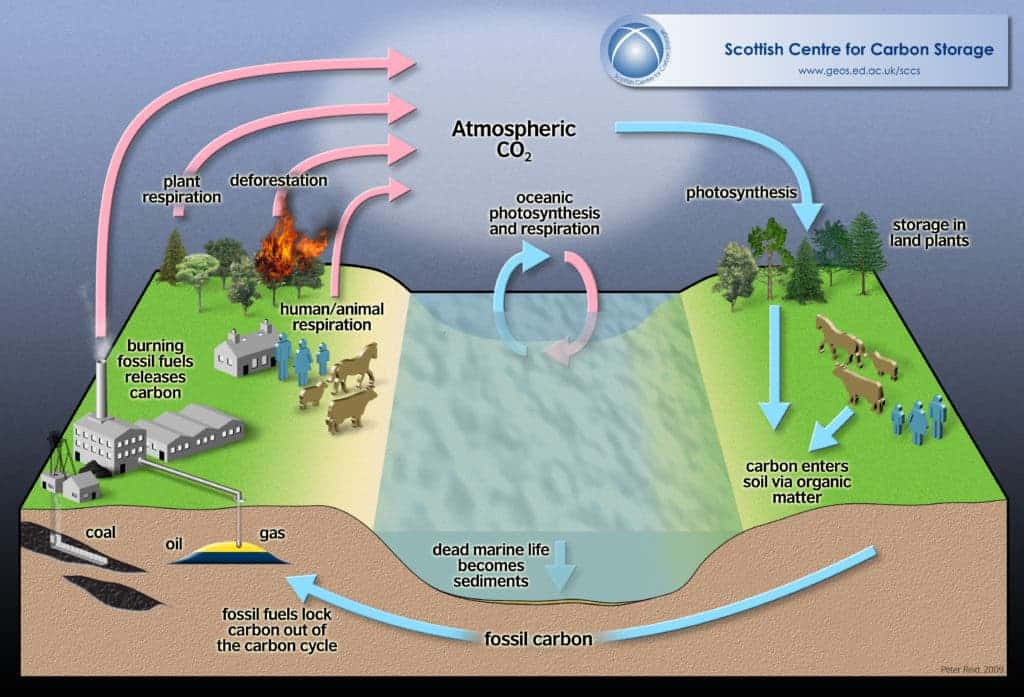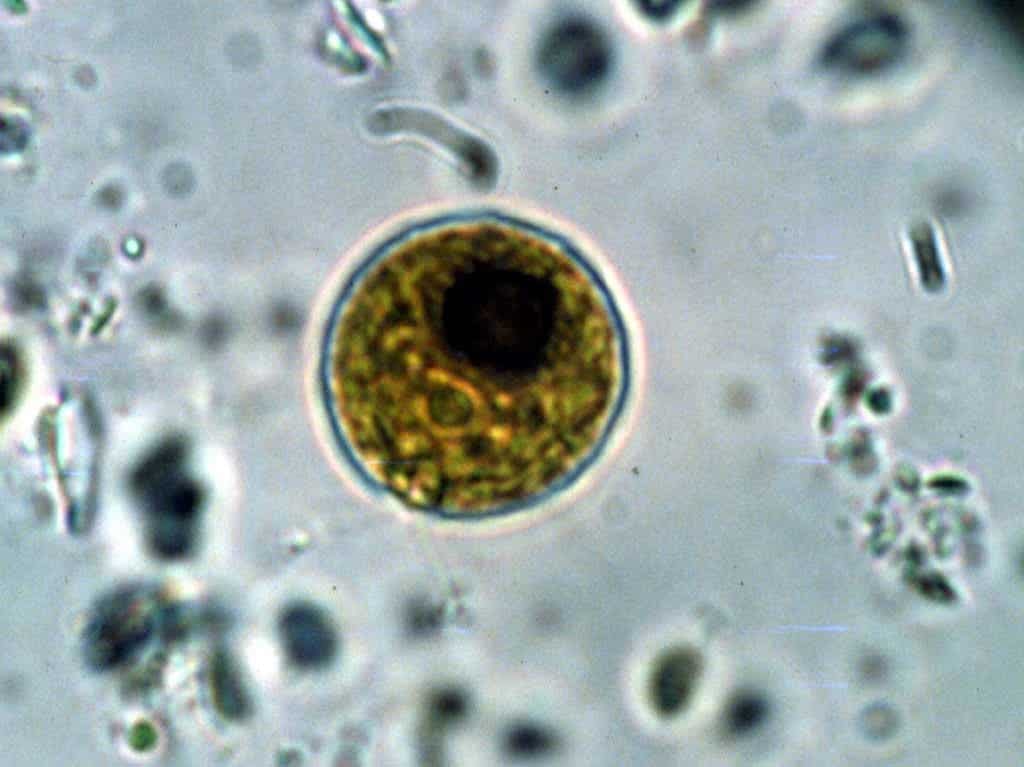With the rapid increase of carbon dioxide in the atmosphere, natural processes that lock away carbon from entering the atmosphere are even more important. Plants suck up carbon dioxide from the atmosphere and fix it in their tissues where it doesn’t contribute to the greenhouse effect. Phytoplankton in the ocean are extremely important in this cycle and take in 40% of all carbon that is fixed globally each year. When phytoplankton die, they sink, and the ones that pile on the ocean floor are taken out of the carbon cycle. However, the heating of the oceans is a big unknown added into this cycle. Will phytoplankton still be able to take carbon dioxide out of the carbon cycle or will they do poorly in hotter water?

Phytoplankton growth depends on two processes: photosynthesis and respiration. Photosynthesis locks carbon into the plant, while respiration causes some carbon to be lost. Hotter temperatures cause respiration to rise, so more carbon is released into the atmosphere and less is safely locked away. However, the worries that net primary production will decrease don’t account for evolution. The phytoplankton should adapt to the warming oceans in order to survive.
Controlled heating
In a 10 year study, scientists at Exeter University created semi-natural conditions to mimic phytoplankton in a warming ocean. You see, previous studies looked only at how warming would affect phytoplankton in the lab. The goal of this study was to examine look-term effects in a more realistic setting. A mix of phytoplankton were placed in a gradient of eight different temperatures (16-42 °C) in outdoor artificial ponds. The phytoplankton were exposed to all weather conditions and free to naturally disperse. The population growth rate of the green alga Chlamydomonas reinhardtii was measured.

The phytoplankton that were grown in warmer water got used to those temperatures and did not do so well at the original water temperature. Therefore, they adapted to the new, hotter, water temperatures. Additionally, they photosynthesized more and were less likely to be damaged by light. C. reinhardtii were able to survive the warming temperatures by increasing their rate of photosynthesis. This means that they lock away even more carbon. Both of these findings are a positive sign. This isn’t an isolated finding; a previous study found that another Chlamydomonas species also photosynthesized more in higher temperatures. Here, it was due to decreases in respiration as opposed to increases in photosynthesis.
If most phytoplankton respond to a heating ocean by locking away more carbon, it could balance the predicted declines in aquatic ecosystems taking up carbon dioxide.
Journal reference: Schaum, C.-E. et al. Adaptation of phytoplankton to a decade of experimental warming linked to increased photosynthesis. Nat. Ecol. Evol. 1, 0094 (2017).



